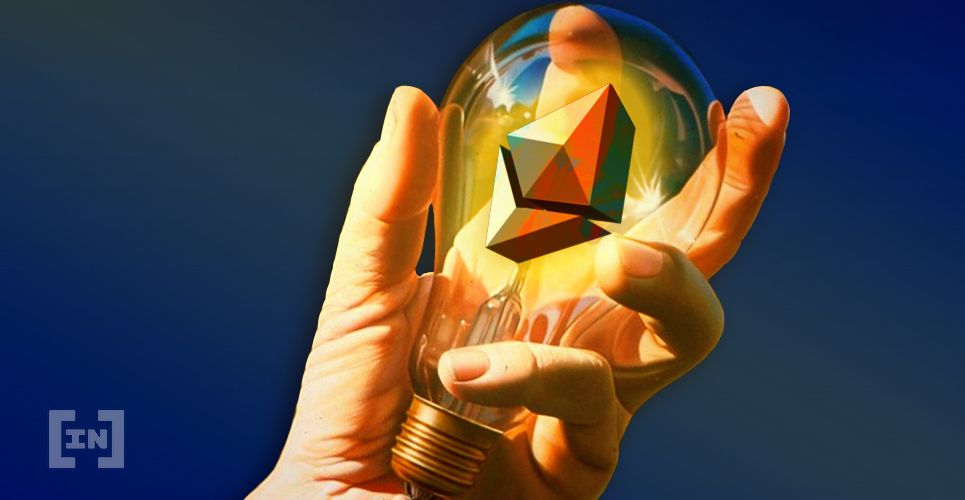A proposal to add a second fuel source for the Ethereum network has recently been submitted by a developer to run in parallel to its existing fuel, gas.
The Ethereum network is due to undergo a raft of changes this year. The most eagerly awaited upgrade is the shift to proof-of-stake consensus under the new ETH 2.0 blockchain. Phase 0 on the Serenity roadmap is already operating on a testnet, but there are still other proposals coming down the pipeline.
Ethereum Oils the Gears
A proposal to add a second fuel source to the Ethereum Virtual Machine (EVM) has just been submitted. Independent researcher and software developer, Alexey Akhunov (@realLedgerwatch), who devised the upgrade, tweeted the proposal. The suggestion has yet to make it as an official EIP (Ethereum Improvement Proposal) but is now being researched and discussed. The motivation arises from a need to prevent repeatedly adjusting gas costs for operations on the network. Gas is currently used for two different purposes; paying for computation and storage resources, as well as preventing reentrancy by hardwiring the amount of gas a call can use. Due to the way that smart contracts are written, adjusting the gas schedule to better reflect resource usage causes unintended consequences, the brief added.
‘Oil,’ a name suggested by Ethereum Foundation technical writer Griffin Hotchkiss, has been proposed to run in parallel with gas. The comments that followed appear more concerned with the name than the technicalities of what was trying to be achieved. Akhunov elaborated;
Due to the way that smart contracts are written, adjusting the gas schedule to better reflect resource usage causes unintended consequences, the brief added.
‘Oil,’ a name suggested by Ethereum Foundation technical writer Griffin Hotchkiss, has been proposed to run in parallel with gas. The comments that followed appear more concerned with the name than the technicalities of what was trying to be achieved. Akhunov elaborated;
This has materialised as a part of Stateless Ethereum research, as part of recognition that block witness will need to be paid for, but adjusting gas costs could be quite a painful way to do it. Instead, one would adjust oil costs,A specification and example of how the new fuel would work in tandem with gas were included in the proposal. Oil would primarily take over the main transactional purpose of gas, leaving the secondary purpose to the existing gas, Akhunov added.
Backward Compatibility Issues
The proposal is one of many that will emerge in the coming months to deal with backward compatibility. When the new ETH 2.0 blockchain goes live on the mainnet, there will be issues with smart contracts written for ETH 1.0. In essence, they will need to be re-written for the new chain and its sidechains (shards), when those stages are rolled out. Using a second fuel may ease some of those issues that will likely arise down the line.
Top crypto platforms in the US
Disclaimer
In adherence to the Trust Project guidelines, BeInCrypto is committed to unbiased, transparent reporting. This news article aims to provide accurate, timely information. However, readers are advised to verify facts independently and consult with a professional before making any decisions based on this content. Please note that our Terms and Conditions, Privacy Policy, and Disclaimers have been updated.

Martin Young
Martin Young is a seasoned cryptocurrency journalist and editor with over 7 years of experience covering the latest news and trends in the digital asset space. He is passionate about making complex blockchain, fintech, and macroeconomics concepts understandable for mainstream audiences.
Martin has been featured in top finance, technology, and crypto publications including BeInCrypto, CoinTelegraph, NewsBTC, FX Empire, and Asia Times. His articles provide an in-depth analysis of...
Martin Young is a seasoned cryptocurrency journalist and editor with over 7 years of experience covering the latest news and trends in the digital asset space. He is passionate about making complex blockchain, fintech, and macroeconomics concepts understandable for mainstream audiences.
Martin has been featured in top finance, technology, and crypto publications including BeInCrypto, CoinTelegraph, NewsBTC, FX Empire, and Asia Times. His articles provide an in-depth analysis of...
READ FULL BIO
Sponsored
Sponsored

